Rule based Website Personalization
Rule based web personalization allows a marketeer to edit and modify various aspects of their websites like text, images, banners, CTAs, background for different segments of website visitors.
Here we will be elaborating on various parts of this module and their functionality in detail.
Listing page
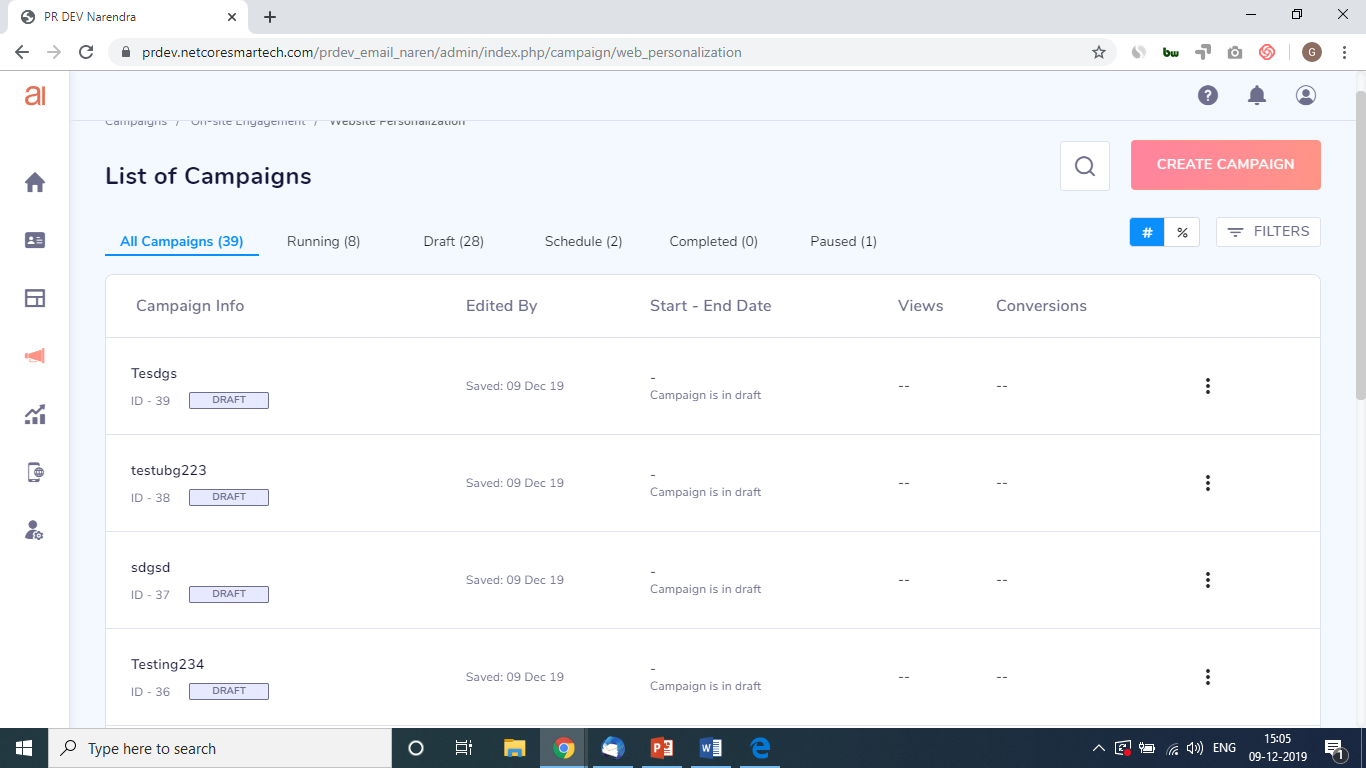
- Go to Campaigns button - Clicking on this button will open up multiple submenus. Select on site engagement and then web personalization.( Campaigns>Onsite engagement>Web personalization). This will bring you to the listing page.
- Create Campaign Button - Clicking on this button will take you to the setup of the page of the newly created campaign.
- Filter button- this will help you filter campaigns
- Based on Date created-eg today/yesterday/last 7 days etc
- Edited by-which user edited the campaign
- Tags (if any)
- Status - There are five statuses available - Running, Draft, Paused, Scheduled and Completed. The campaigns are grouped under these heads in separate tabs. By default re campaigns together are displayed under all campaigns tab.
- Percentage and Hash Switch - Hash Switch(By Default) will show the numbers of View and Clicks. Percentage Switch will show the Click/View percentage in the Click column.
- The Campaign Name section will have Campaign Name, Campaign ID and Status. . Clicking on the campaign name will show the preview of the campaign.
Campaign preview will show campaign setup summary, audiences and the respective personalization previews and schedule details.
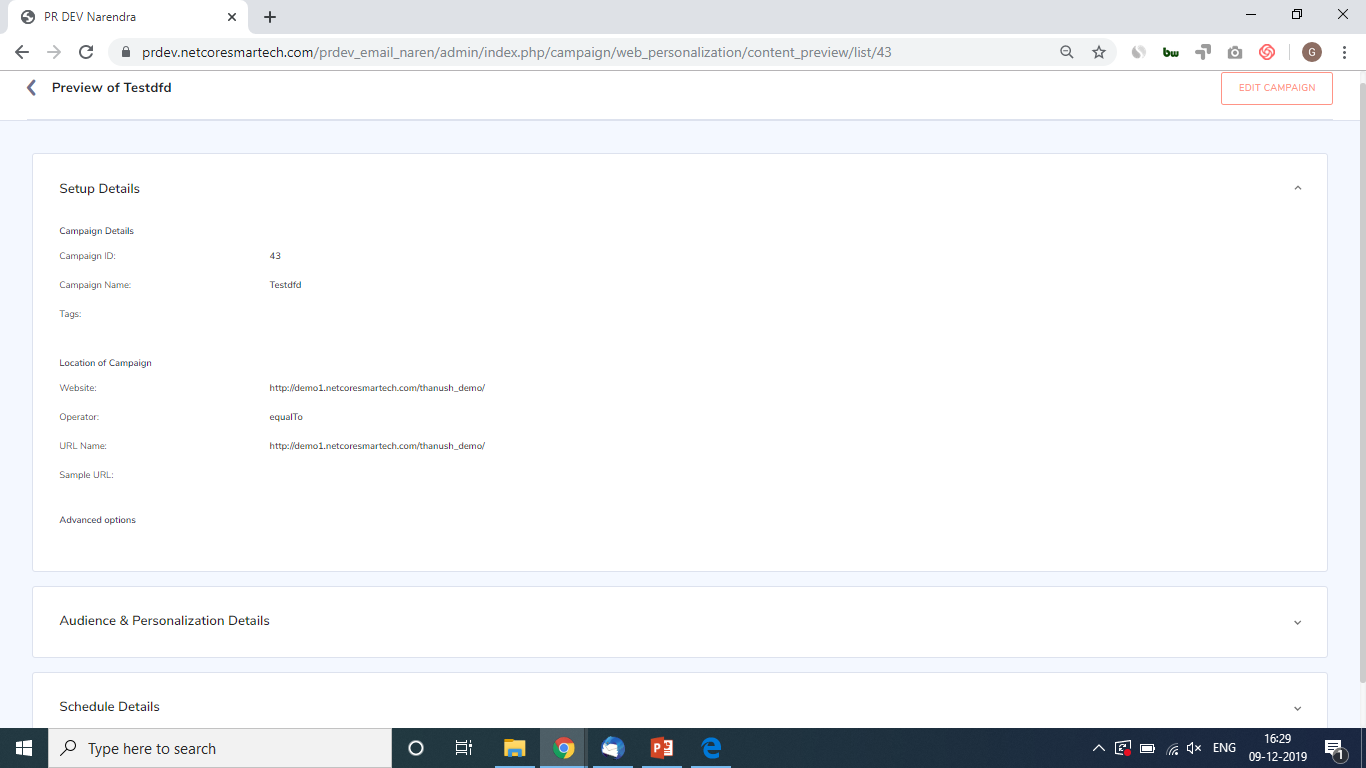
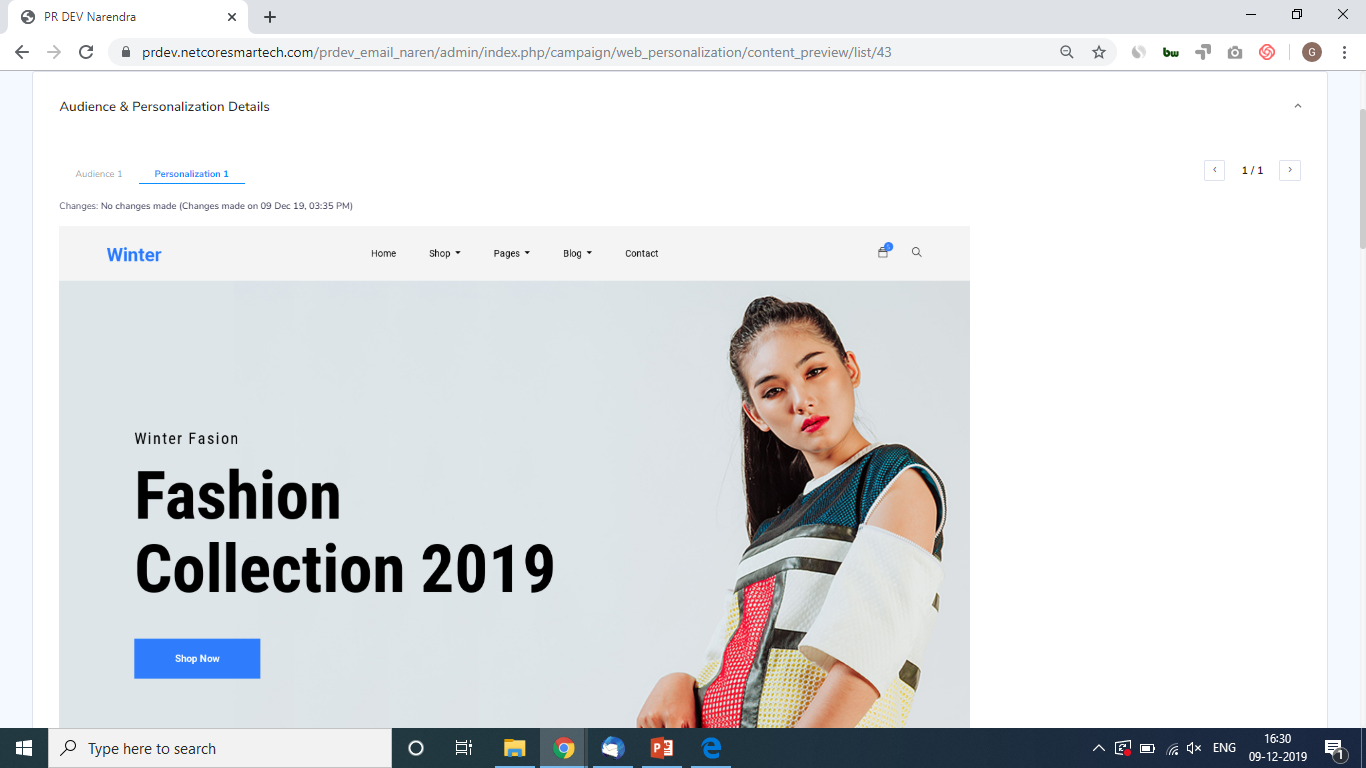
- Edited by-which user has modified the campaign and on which date
- Start date-end date of the campaign- Campaign sat date will be shown for running, paused and completed campaigns. If the campaign does not have an end date, then it will show indefinitely. For draft campaigns, this will be blank.
- Views -Total number of visitors who have seen the campaign.
- Conversions-Total number of users who have done the conversion activity mentioned in the goal section of the setup menu. Conversion tracking is voluntary and will not be shown unless it is enabled in the setup page.
- Hamburger Menu - At the extreme right-hand side of every listed campaign, you can find 3 dots icon(this is the hamburger menu). On clicking the hamburger menu user will get the option of
- Pause- (the only option for running campaigns)
- Resume -(available in paused campaigns)
- Clone (available for draft,scheduled,paused,completed, campaigns)
- Edit(available for draft,scheduled,paused campaigns)
From the listing page, you can select the create campaign option in the top right-hand corner and that will bring you to the campaign setup page
Setup
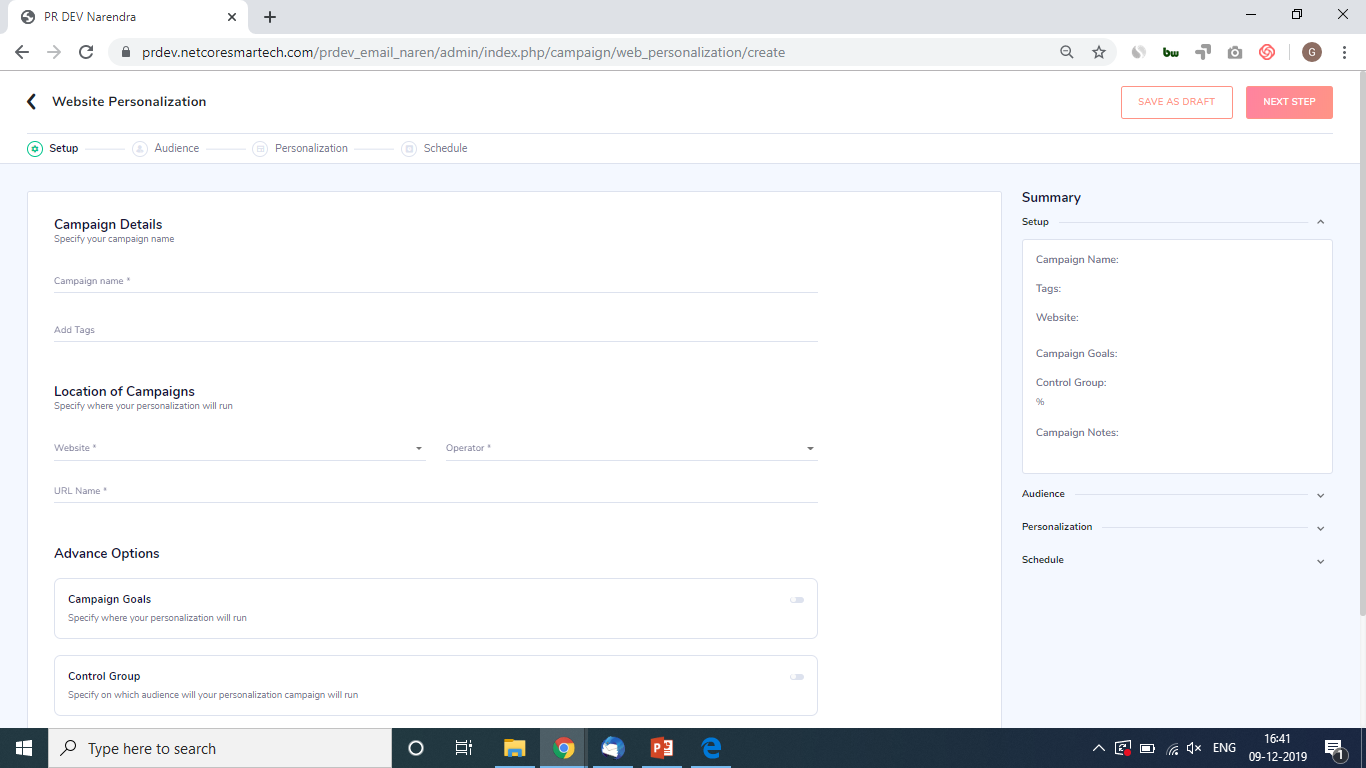
- Campaign Name - This is a mandatory field and will be used as the identifier for the campaign.
- Tags-which will help us identify/group similar campaigns.This field is optional. You can create or use existing tags for grouping relevant campaigns. Up to 5 max tags allowed.
- Website- A mandatory field where you select the website, where you wish to run the web personalization . Websites added in assets section will be visible here.
- URL name: URL of the page/pages of the above website where you want to run the personalization
- Operator- you can select 3 operators for the URLs to personalize
- Equals to- exact url match
- Start with- URL start with keywords
- Contains- URL contains keywords
- Sample URL- In case you want to run personalization on multiple pages though same campaign, you can select operators-starts with, contains
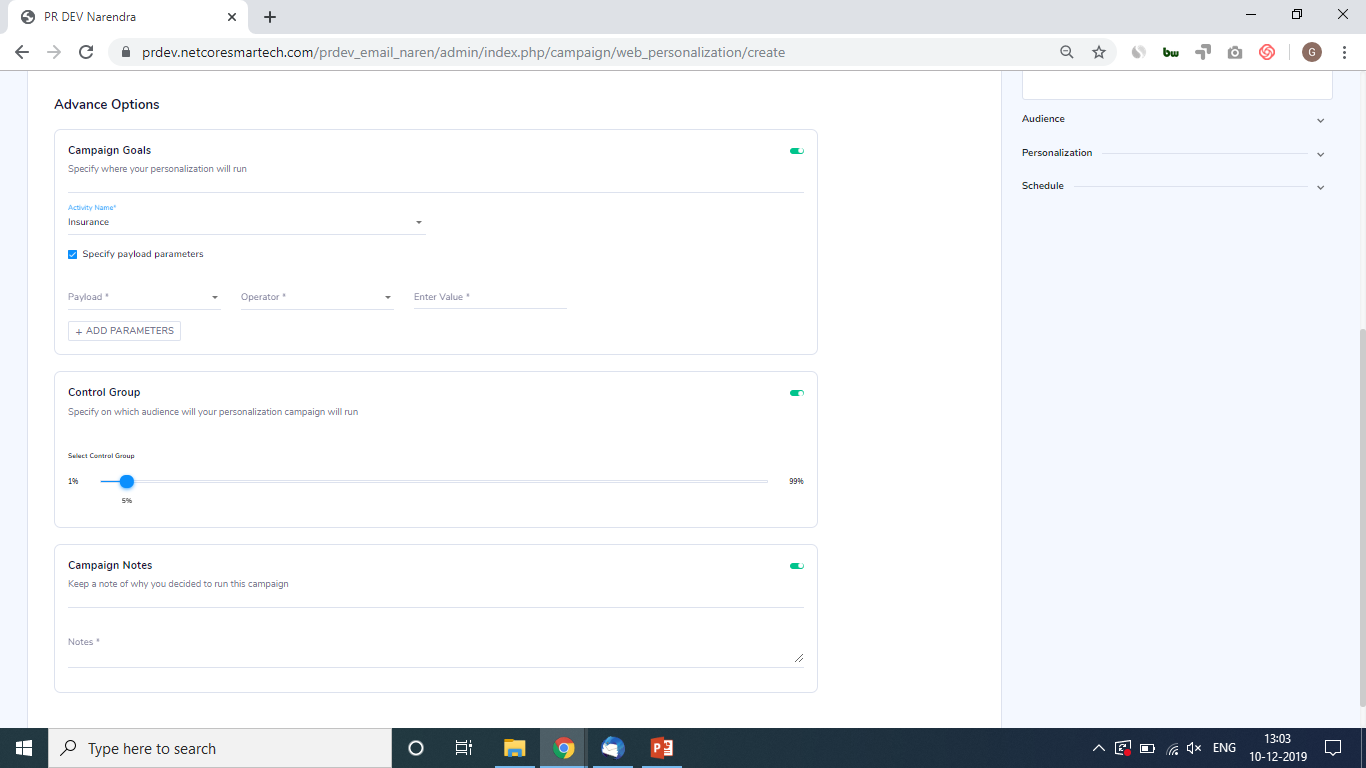
- Advanced options-This section contains campaign goals,control group,campaign notes
- Campaign goals- Goals help you set the conversion tracking for the campaign. You can select the activity name which you will consider a conversion event- eg buy/download/click etc. You have the option of specifying the payload parameters for the activities. You can add max upto 5 payload parameters.
- Control Group- This is the segment of users who will not view the personalized version of the website. They will view the default website. You can keep the control group from 1 to 99 percent of all visitors. You can see the uplift that personalization provides with respect to the control group.
- Campaign notes.- You can mention any observations ,notes ,insights etc regarding the campaign that might be referred to at a later date. This is optional.
- Summary section- You can see the summary details of the campaign on the extreme right-hand side. This gives an overview of the campaign as proceed through the setup, audience, personalization and schedule pages, that will help you get a quick reference.
Audience
Define Audience
- Users can set up multiple audiences in a personalization campaign. Audience are groups of visitors who will see a particular personalization. You will then have to set up personalization for each of the audiences of the campaign.
- User can add audience by clicking on add audience group button on the extreme left hand side of the screen. At max 75 audiences can be added to a single personalization campaign.
- There are two types of audiences in general:
-
- Real time- based on visitor activity on the website occuring in real time
- 2.Past Data- based on past user activity/attributes(basically lists and segments)
- User can select either of these two times of audiences or both.
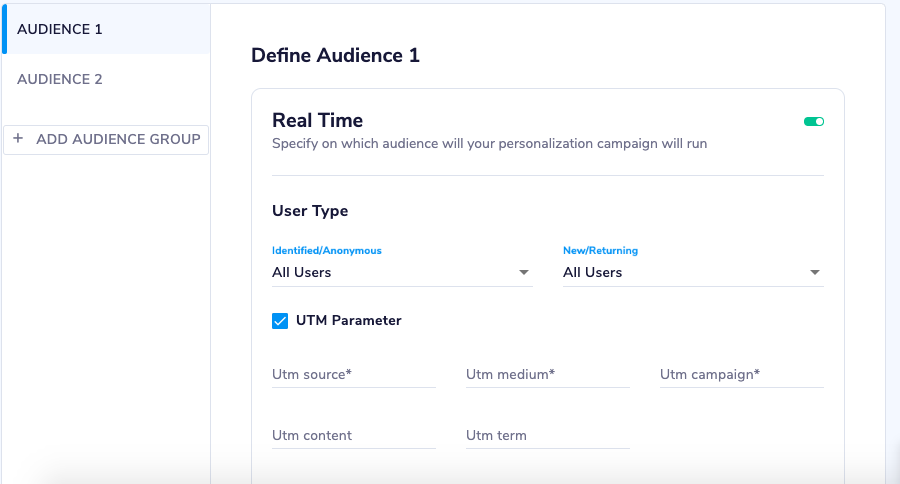
Real-time audience
- You can select if the visitor is anonymous/identified or any
- You can select if the visitor is new/returning/any
- You can also choose the source of the visitor-organic/referral /social. In case you select any source then you will have to specify the UTM parameters of the same.
- You can also select the device type of the audience including Desktop type, Mobile type, tablet type, and also the browser.
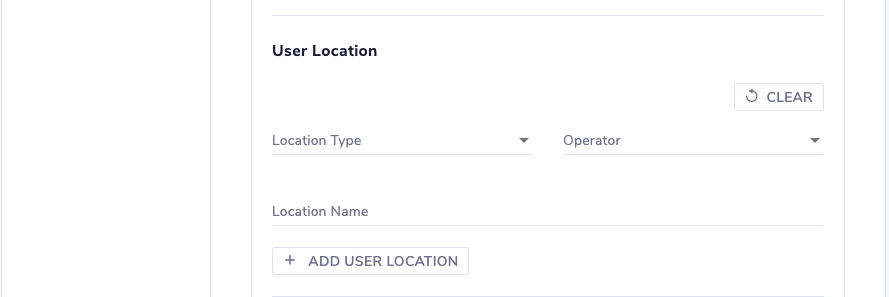
Location-Based Audience Creation:
- You can create audiences on the basis of the geographic location of the users you want to target.
- For this you have the option to target the user on the basis of three parameters, the user's city, region, or country.
- You also have a not option, which allows you to set up audiences such that a user does not come from that location.
- A total of 5 location can be set at a time for a particular audience
- Can be seen in the image above
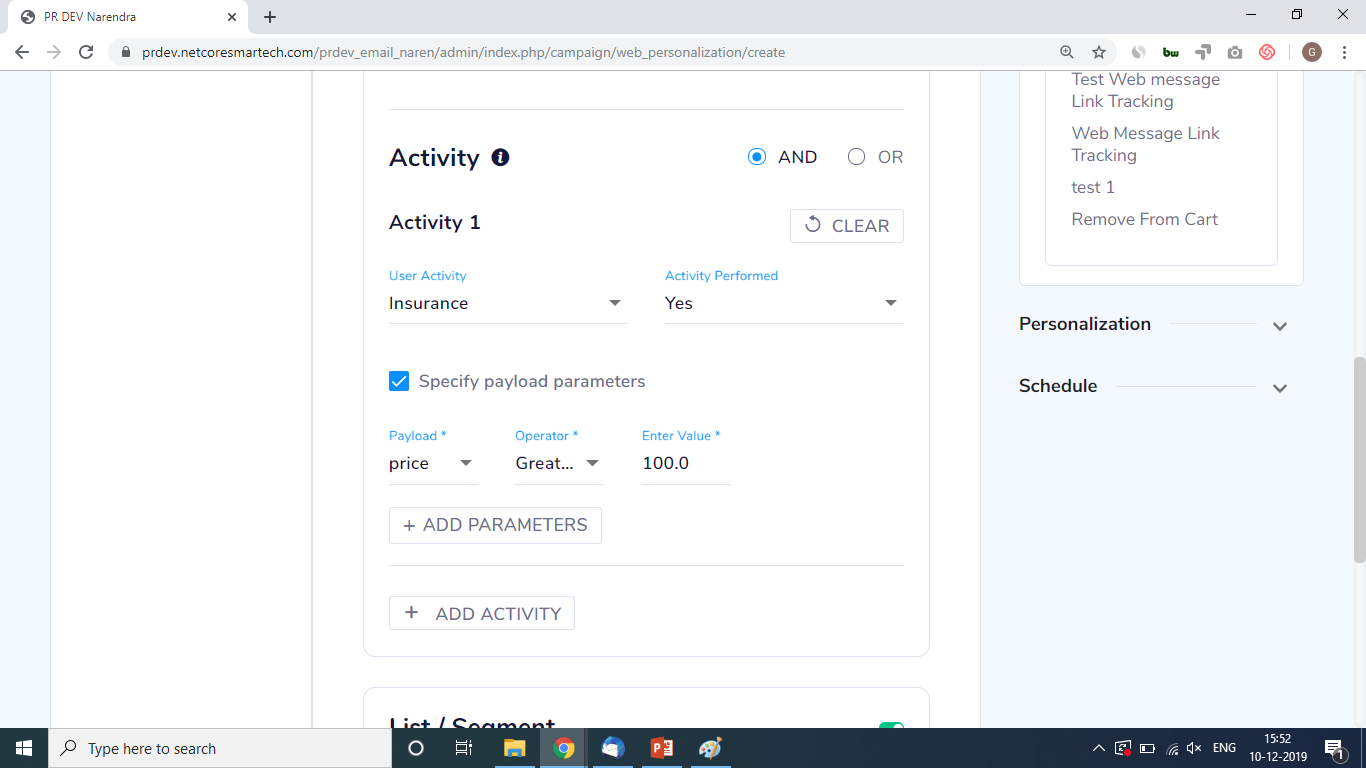
Audience activity
- User can also select the real time visitor activity for which visitors will see personalization. This is optional. Audience activity will be added as AND condition with real time activity.
- Visitor who does the specific activity will see the personalization once they revisit the page or refresh the page.
- You can select an activity from the drop down list and put a condition if the activity is performed or not.You can also add the payload parameters of the activity.Upto 5 payload parameters are allowed per activity.
- You can add up to 5 activities in total for 1 audience.
- User can select AND/OR condition for the activities. Whatever you select will be applicable for all the activities in the audience.
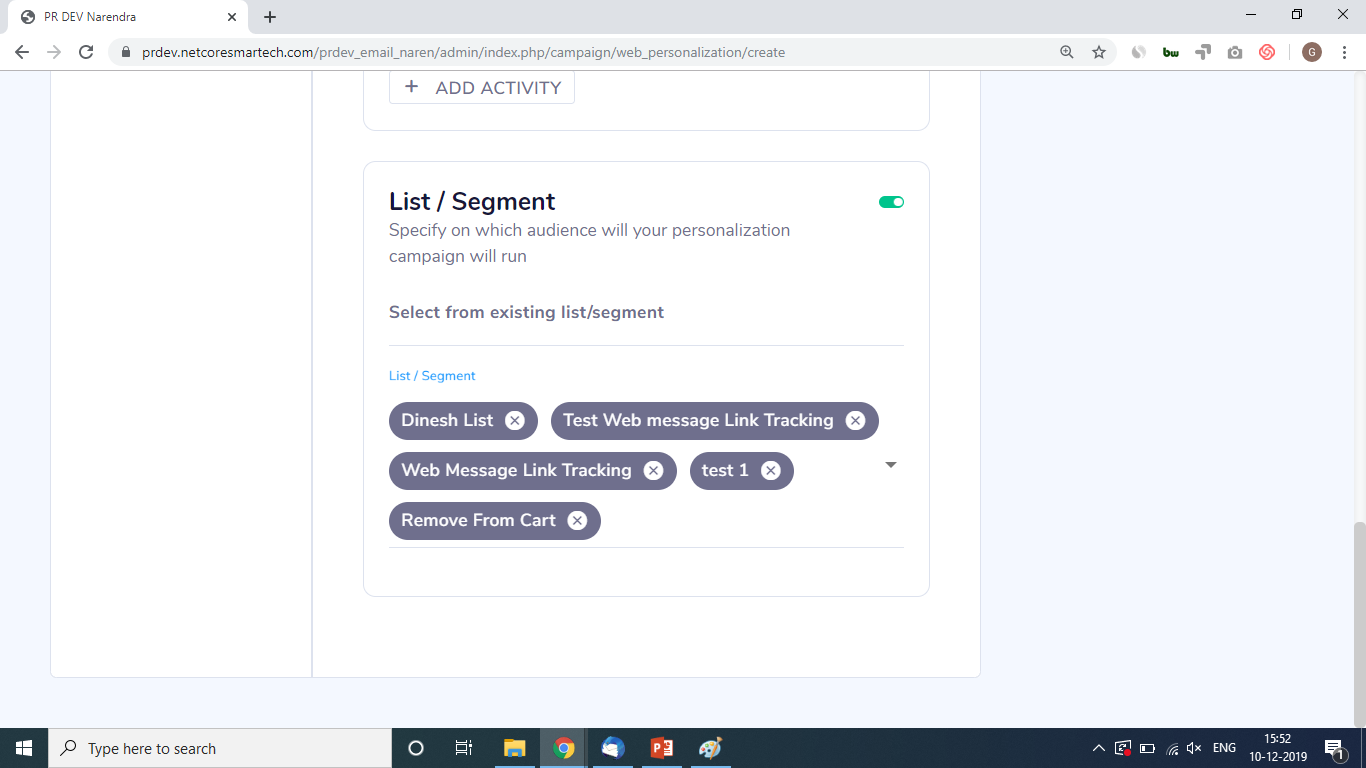
List/Segment
- User can also add visitors from pre created segments/lists in smartech.
- User can select multiple lists /segments from a drop down menu
- User can also search the lists/segments by name
- All the lists/segments selected will be visible. Users can add/remove them if needed.
Personalize
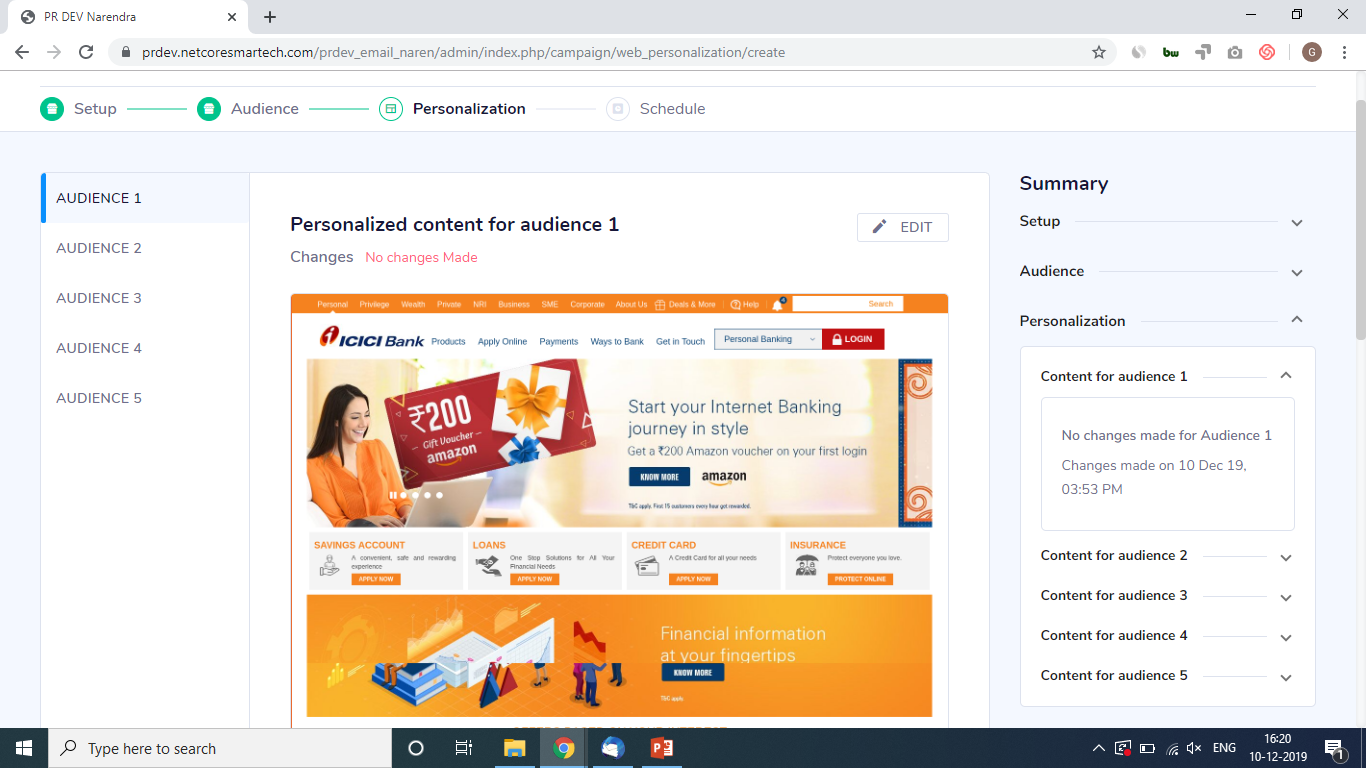
- User can create personalizations for each of the audiences that are created.
- You can preview the webpage for which personalization is made
- You can click on the edit button on the top right-hand corner of the screen to open the visual website editor, where you can make changes to the website
- Once your editing is done all the changes will be saved and you will return to personalization screen.
- Number of edits made for each personalization is also displayed.
Editor

- From the personalization section, once you click on the edit button you are redirected to the website editor.
- You can see a live version of the website and a bar with multiple buttons will appear at the bottom of the screen.
- There are 2 modes available here edit mode and navigate mode
Edit Mode
- In edit mode you can make changes to the website.
- In edit mode you can click on any element and the changes that are allowed for that particular element are shown.
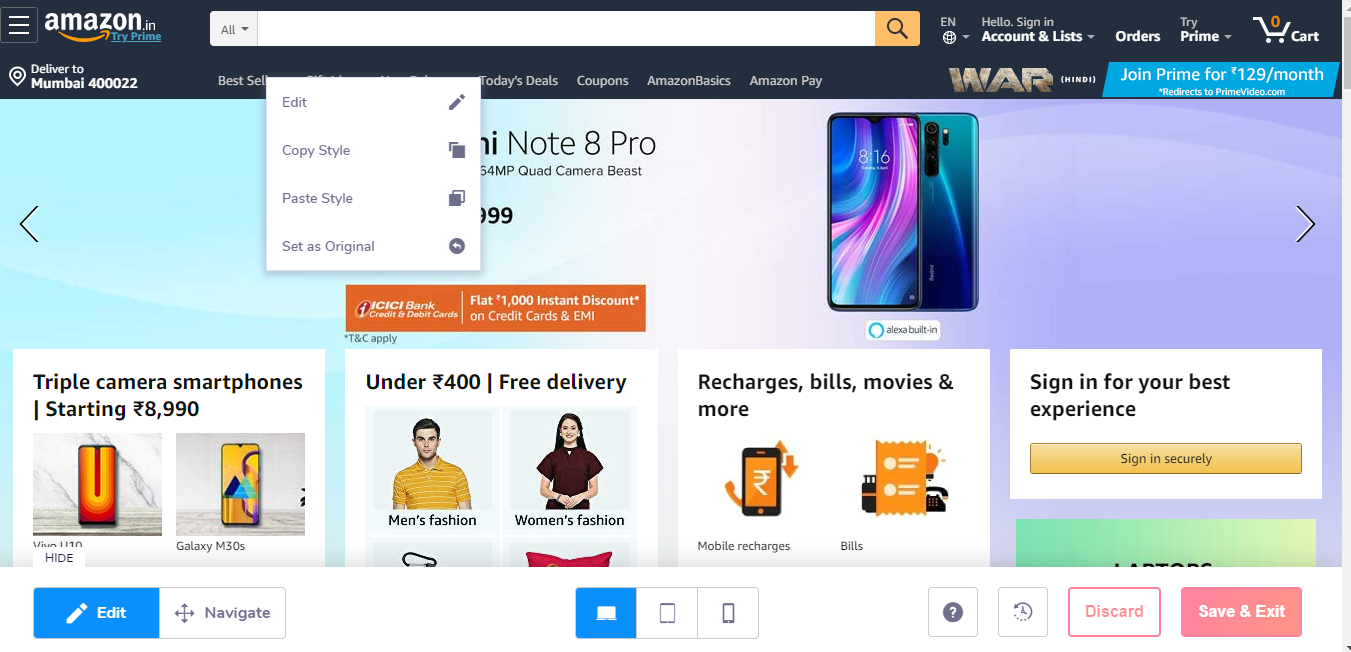
Text Editing
- For text elements you can change the actual text,links,fonts,font size,typography (eg bold italics),colour,background,border and visibility.
- You can choose to save or discard the changes.
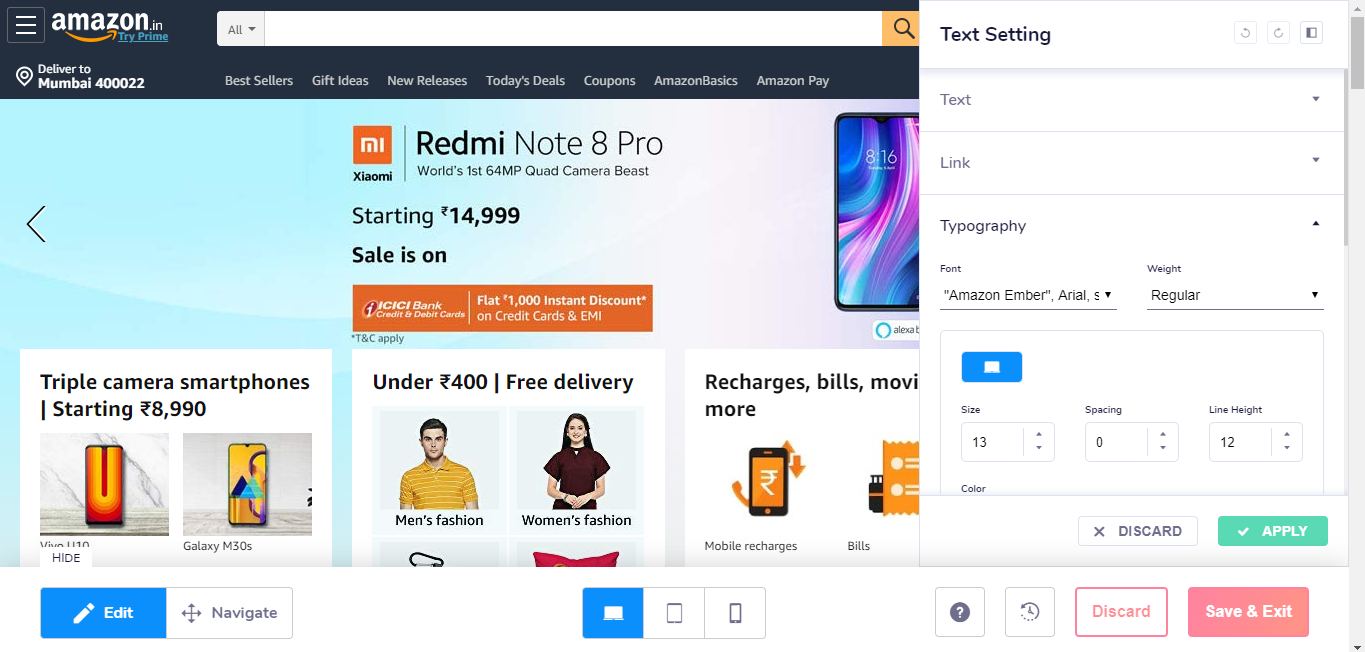
Image Editing
- For images you can change the image itself, border, background, and visibility. For image edits, we provide the recommended size of the image that the original image should be replaced with so that the look and feel and website structure does not get distorted.
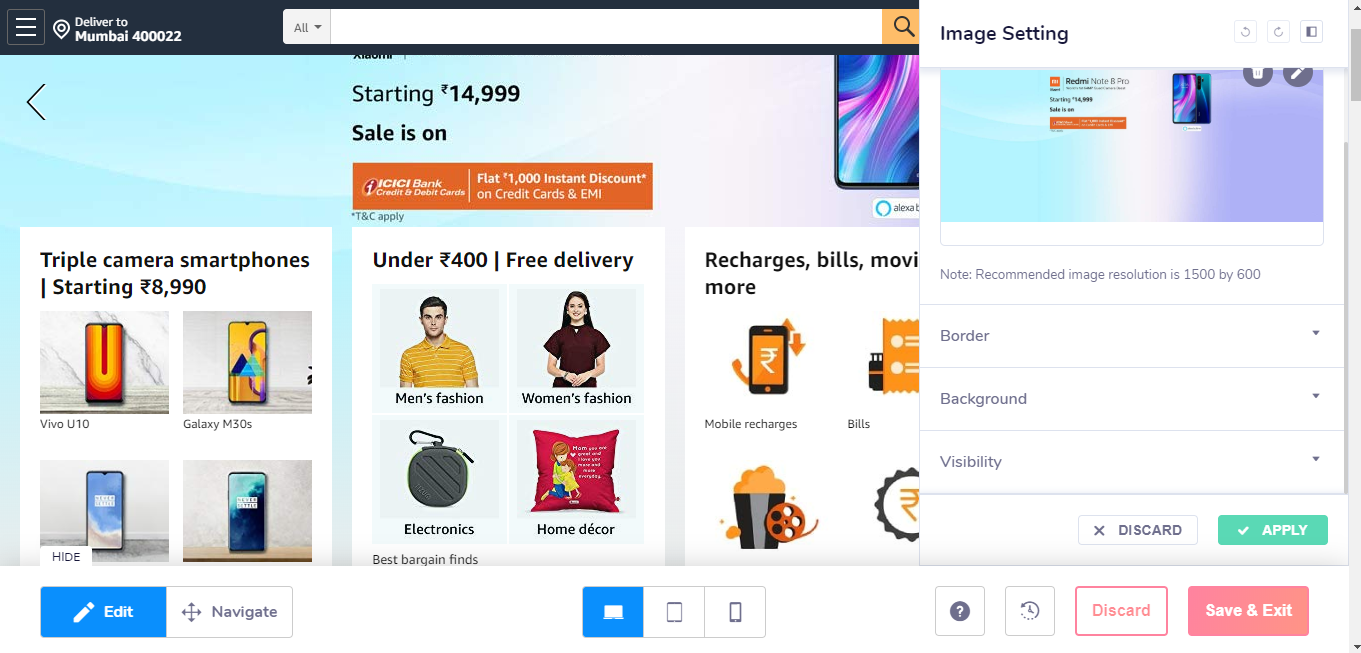
Navigate mode
- In navigation mode you can navigate the website, normally. However you cannot move out of the page that you are editing. In case you do all the data will be lost.
- Navigate mode is especially helpful in case your website has a carousel of banners /images etc. You can move to the next banner in navigate mode and then move to edit mode to edit the banner.

You can also Edit the website in desktop ,mobile and tablet view.
Desktop View
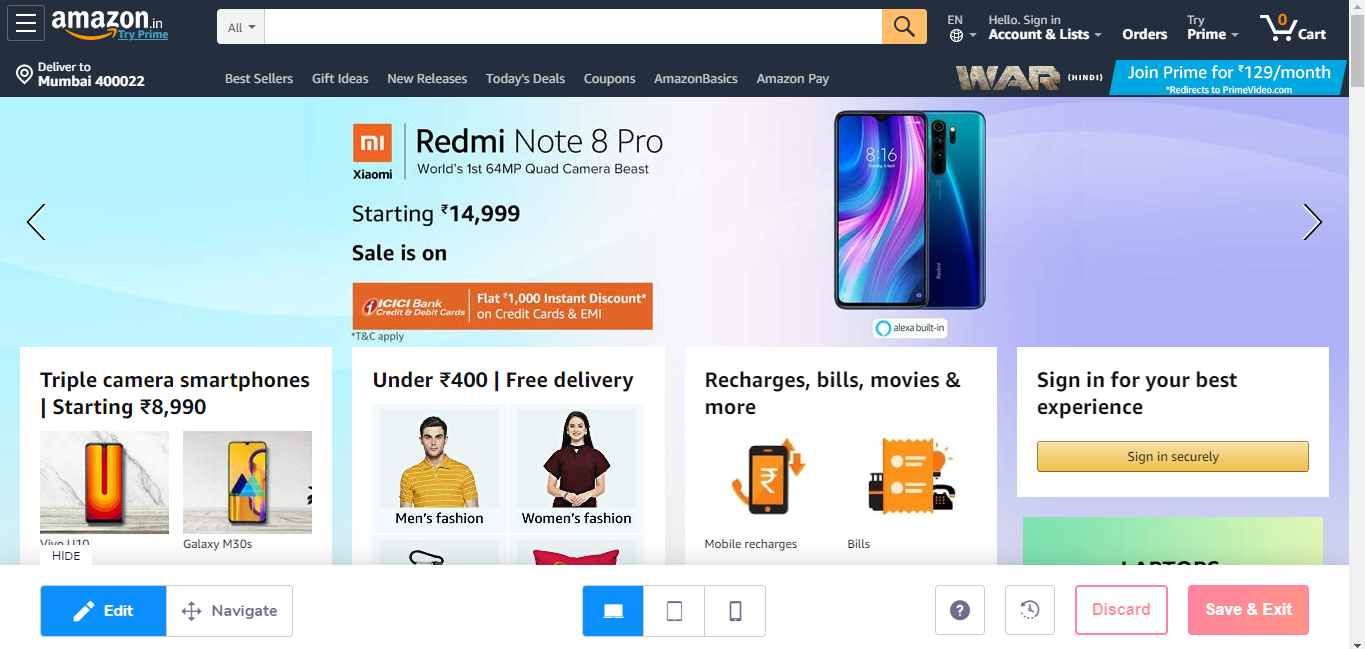
Tablet View
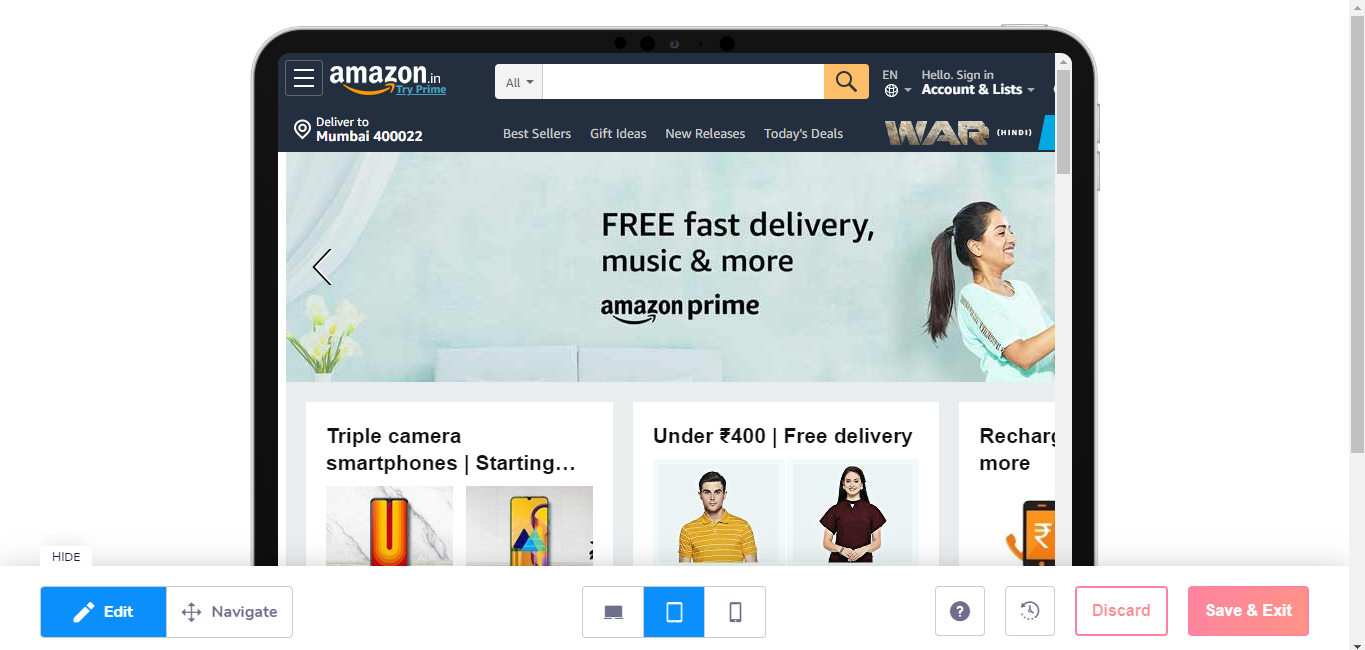
Mobile View
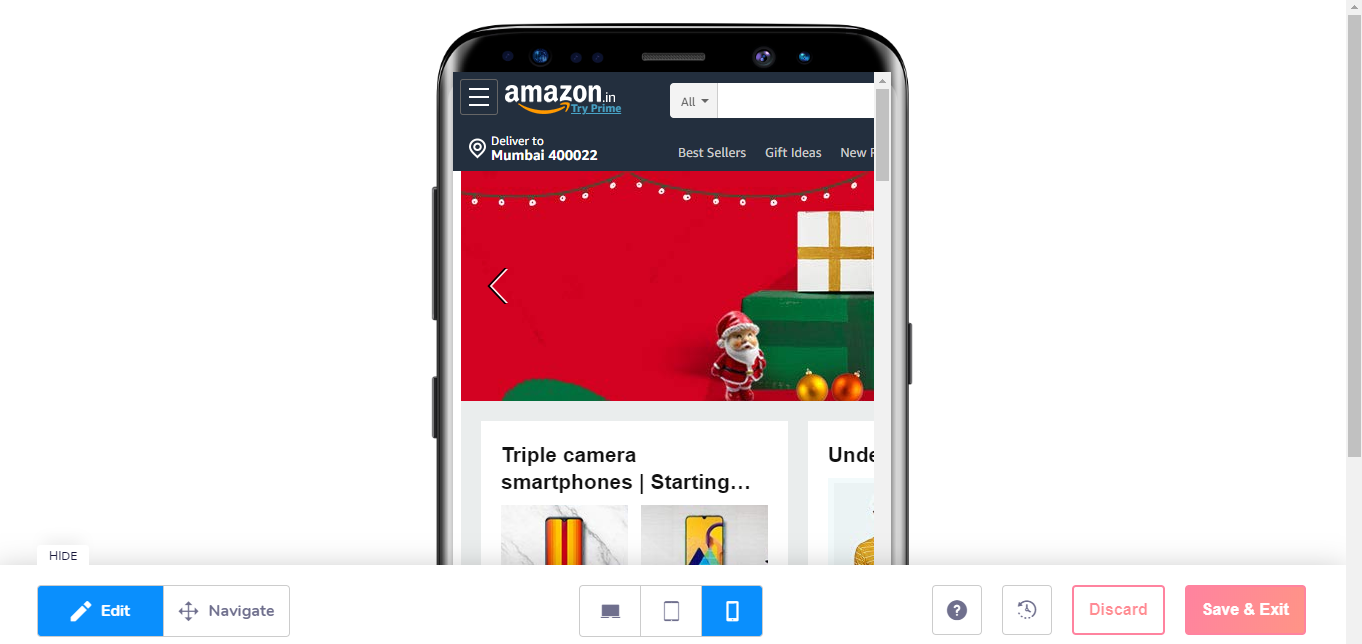
- You can also get the history of edits made on the website by clicking on the history icon.
- You can see the various edits that have been made and can select any particular edit and revert back to that old version
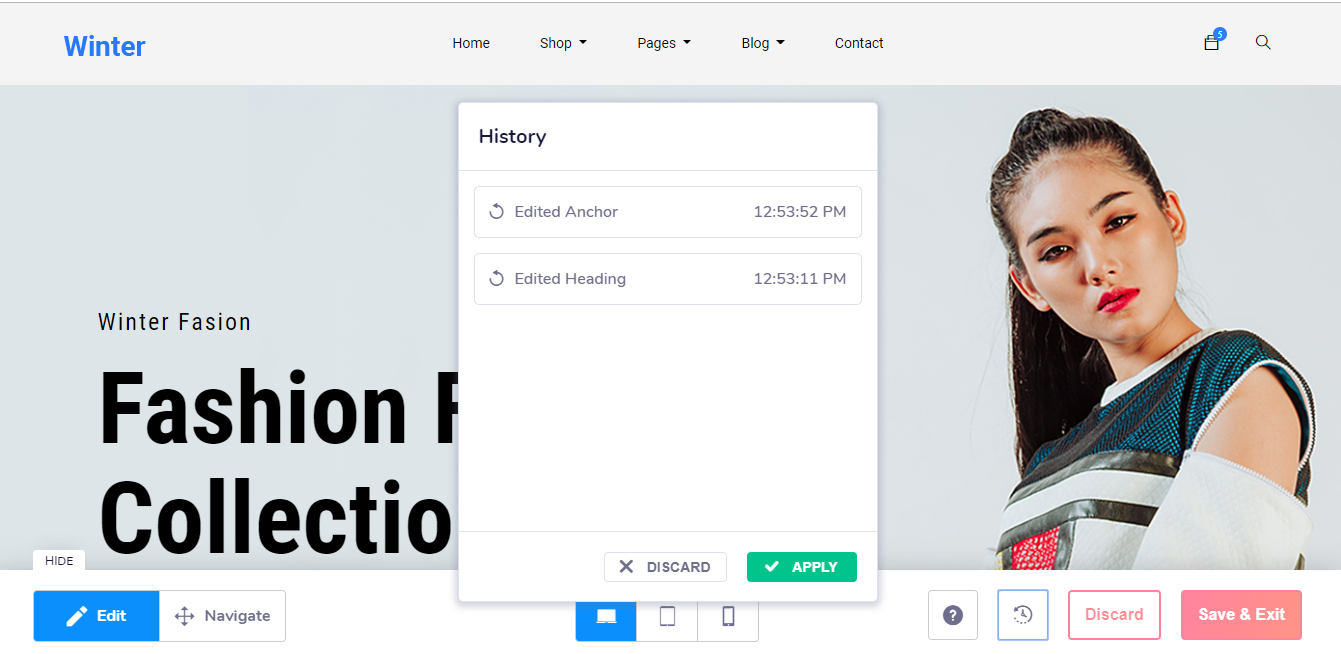
- Once You are done with the changes ,you can click on save and exit. After this the changes that you have made will be mapped to the audience for which you have selected.
- Post this you will land back in the personalization section. You can either choose to edit the website for another audience or proceed to schedule section to schedule the campaign.

Schedule
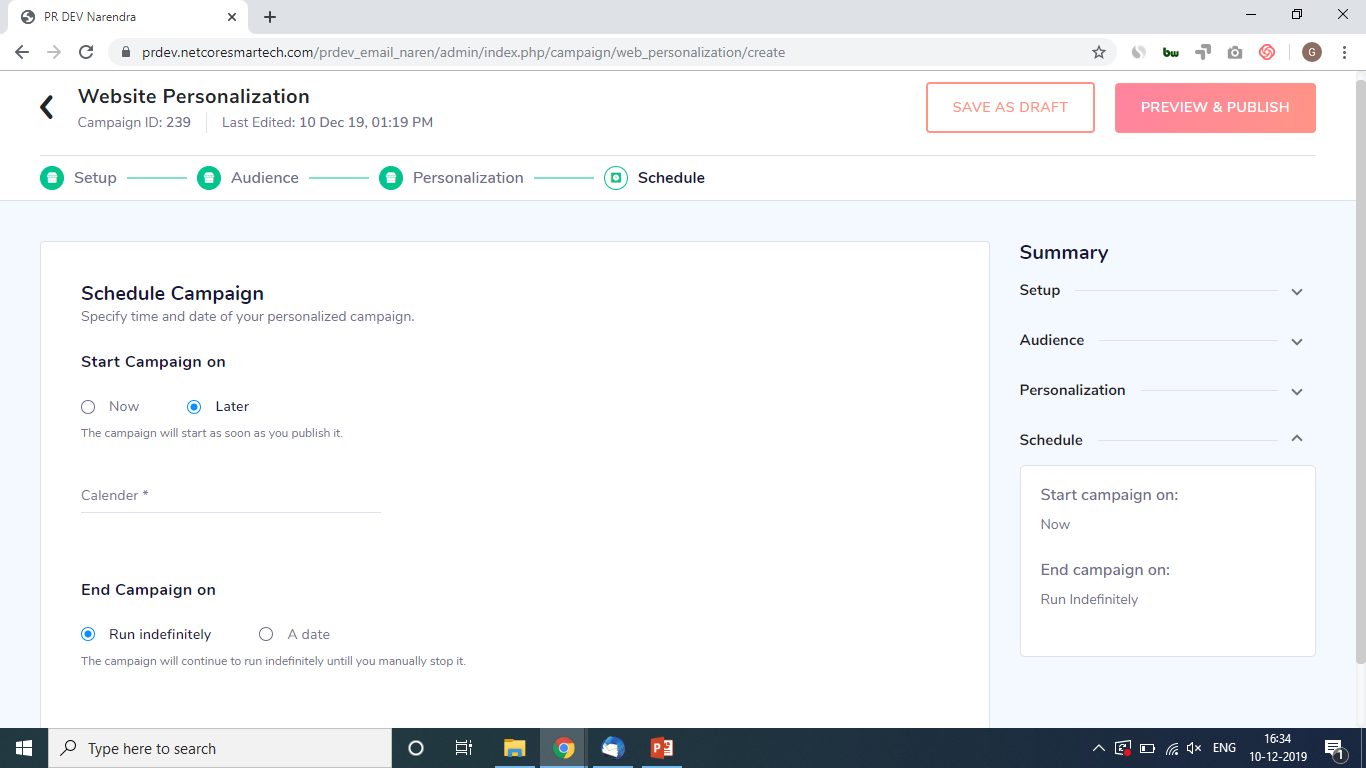
- Post creation of personalization user can schedule the campaign
- User can choose to start the campaign immediately or on a later date
- User can also choose to stop the campaign at a particular date or run it indefinitely.
- User can save it as a draft or preview & publish user chooses preview & publish, he will be sent to preview screen where all campaign details will be filled, User can then edit the campaign or choose to publish.
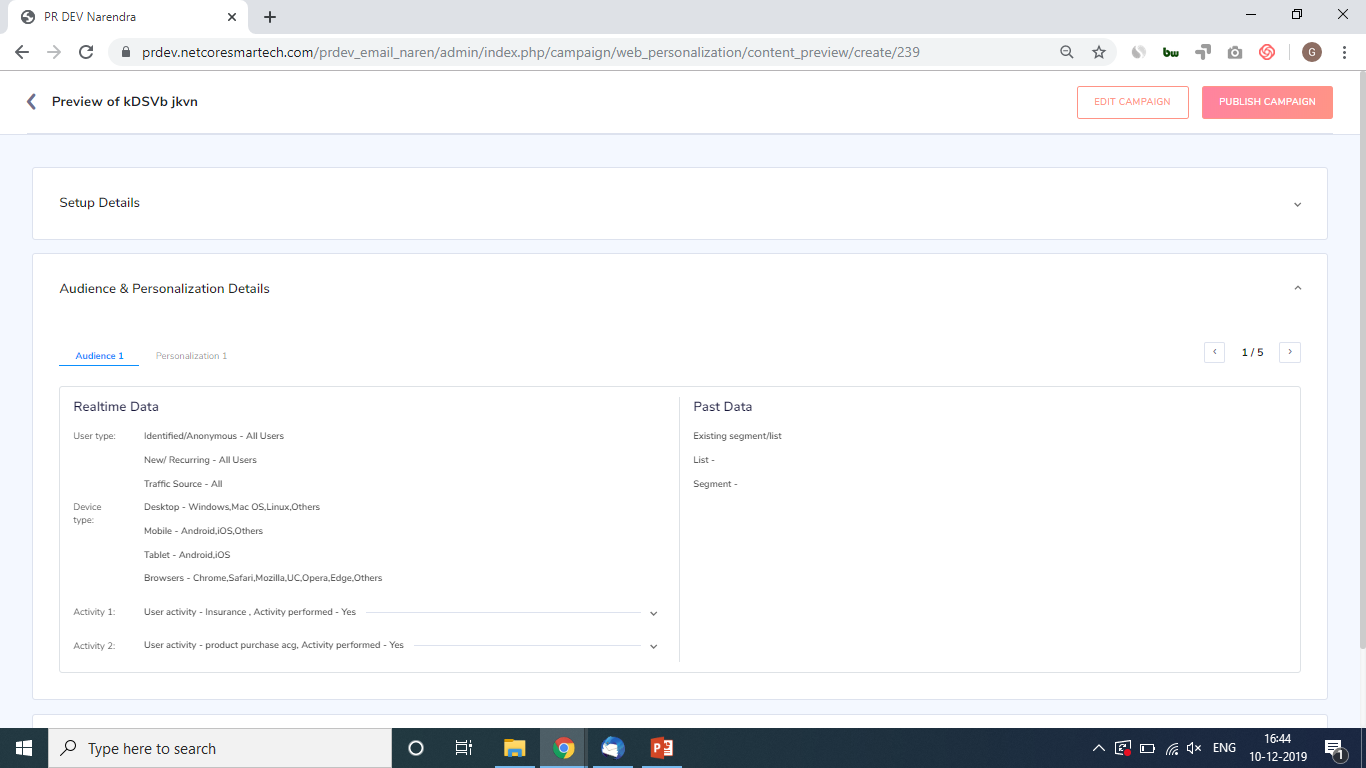
Updated about 5 years ago
